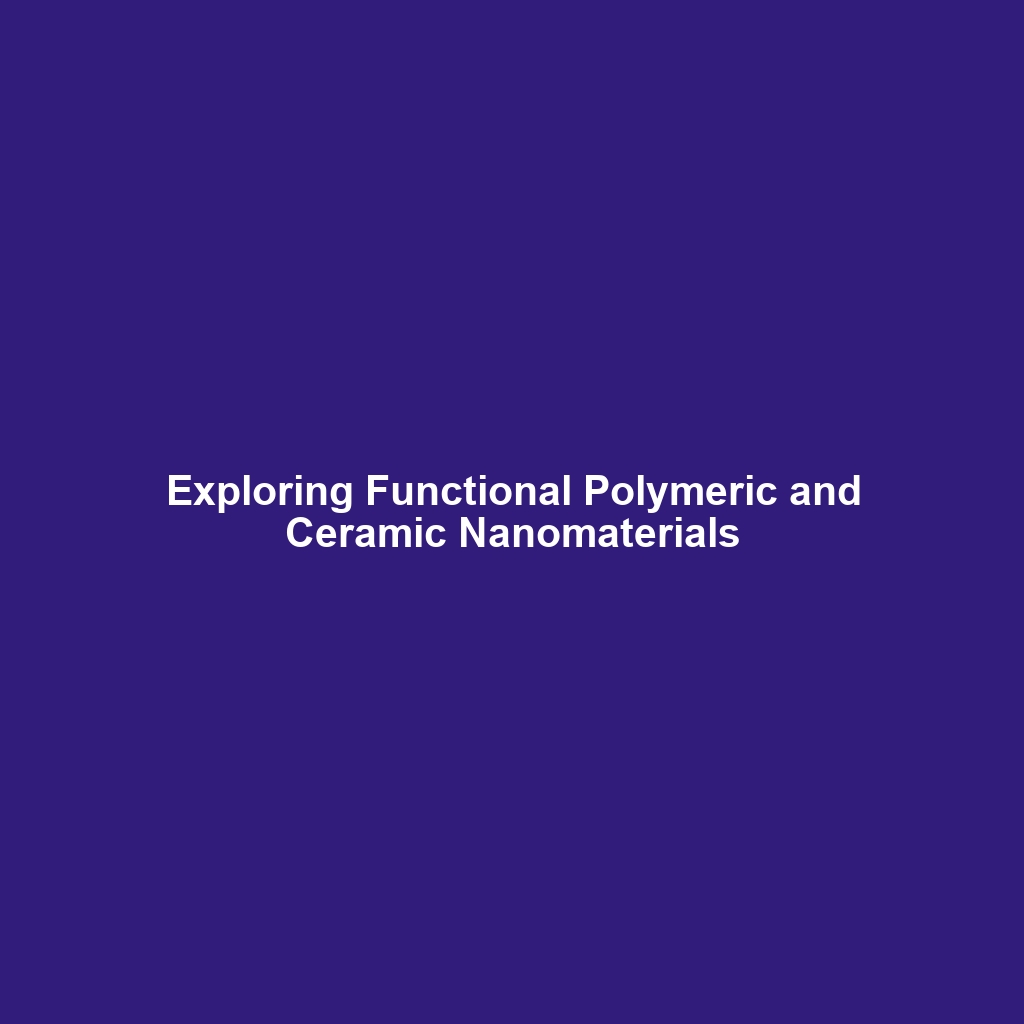Reducing Bulk Materials to Nanoscale Dimensions in Advanced Nanomaterials
Introduction
The field of Advanced Nanomaterials has gained significant traction due to its potential to revolutionize various industries. Reducing bulk materials to nanoscale dimensions is a critical process that enhances material properties, enabling innovative applications across technology and medicine. At the nanoscale, materials exhibit unique physical and chemical properties that can lead to improved performance, efficiency, and sustainability, marking a crucial development in contemporary material science.
Key Concepts
Understanding the principles behind reducing bulk materials to nanoscale dimensions is essential in the realm of Advanced Nanomaterials. Below are some key concepts:
1. Nanoscale Definition
The nanoscale typically refers to materials with dimensions less than 100 nanometers. At this scale, materials can exhibit novel phenomena, including increased strength and unique optical characteristics.
2. Methods of Reduction
Several techniques are employed in reducing bulk materials to nanoscale dimensions, including:
- Mechanical Milling: A physical process that breaks down materials through mechanical force.
- Chemical Vapor Deposition (CVD): A process used to create thin films with controlled nanoscale dimensions.
- Sol-Gel Methods: A chemical route that enables the formation of nanostructures from precursor solutions.
3. Significance in Advanced Nanomaterials
The reduction of bulk materials to nanoscale dimensions opens up new pathways for creating advanced materials with tailored properties for specific applications, making it integral to the advancement of nanotechnology.
Applications and Real-World Uses
The applications of reducing bulk materials to nanoscale dimensions in Advanced Nanomaterials are vast and varied. Here are some significant examples:
- Electronics: Nanoscale materials are used to enhance the performance of semiconductors, leading to faster and more efficient electronic devices.
- Medicine: Nanoparticles are employed in targeted drug delivery systems, ensuring that medications reach specific locations in the body more effectively.
- Environmental Science: Nanoscale materials serve to improve filtration processes, enhancing water purification systems.
Current Challenges
Despite the promising prospects, there are several challenges associated with reducing bulk materials to nanoscale dimensions. Some of these include:
- Scalability: The difficulty in scaling up production methods for nano-sized materials without compromising quality.
- Characterization: Challenges in accurately measuring and characterizing the properties of nanoscale materials.
- Safety: Concerns regarding the environmental and health impacts of nanoparticles must be thoroughly addressed.
Future Research and Innovations
Upcoming research in reducing bulk materials to nanoscale dimensions promises exciting developments in Advanced Nanomaterials. Innovations such as:
- Self-assembly Techniques: Methods that allow materials to arrange themselves into nanoscale structures.
- Biological Applications: The use of nanomaterials in gene therapy and regenerative medicine.
- Smart Materials: Developing responsive materials that can change properties based on their environment.
These advancements will enhance the capabilities of nanotechnology in solving real-world problems.
Conclusion
In conclusion, reducing bulk materials to nanoscale dimensions plays a pivotal role in the evolution of Advanced Nanomaterials. The unique properties that emerge at the nanoscale can lead to innovations across various fields, from medicine to electronics. Continued research and development are crucial to overcoming existing challenges and harnessing the full potential of these materials. For more information on cutting-edge advancements in nanotechnology, explore our articles on nanotechnology advancements and material science innovations.









